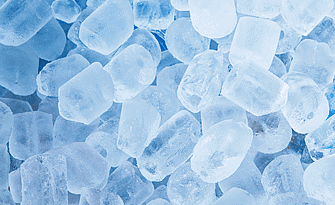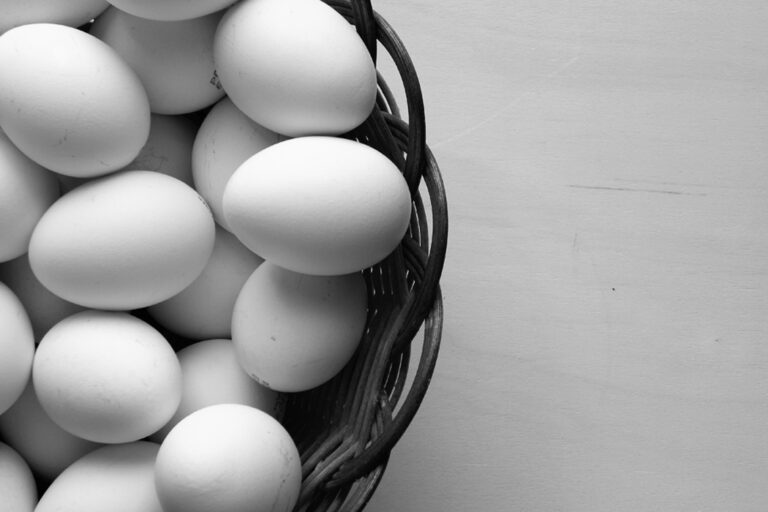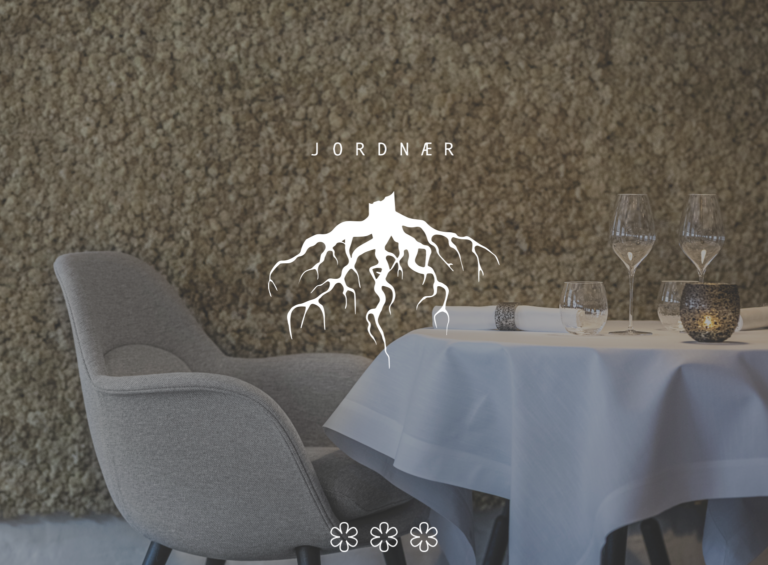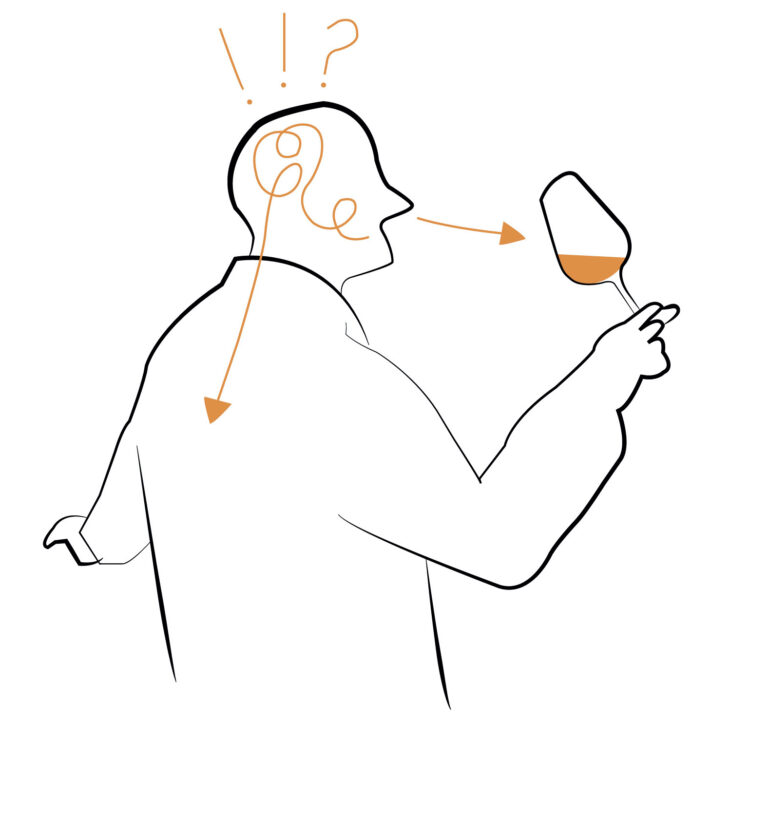When it comes to chilling champagne, the freezer might seem like a quick solution, but it’s crucial to consider the potential consequences. [read the full champagne story]
Estimated reading time: 11 minutes

Champagne, with its sophisticated bubbles and delicate flavors, requires careful handling, and the temperature at which you chill it is more important than you might think. Optimal serving temperatures for champagne range generally from 45 to 48 degrees Fahrenheit (7 to 9 degrees Celsius) to maintain its effervescence and taste profile.
Placing champagne in the freezer can rapidly bring down the temperature, unfortunately, it can also lead to overchilling which numbs the flavor and can dampen the lively mousse that is so characteristic of a good champagne. Moreover, the expansion of the liquid alongside the increased pressure due to carbonation could potentially cause the bottle to explode, risking injury and wasted champagne.
It is therefore recommended to chill champagne in the lower shelf of your refrigerator or in a bucket of ice water for the appropriate amount of time. This method ensures a gradual and controlled drop in temperature, preserving the integrity and the festive bubbles of your champagne. When planning, factor in sufficient time to allow your champagne to cool to its ideal serving temperature without resorting to risky shortcuts.
Champagne Basics
In the world of sparkling wines, understanding the relationship between champagne and temperature is crucial for optimal enjoyment.
Understanding Champagne and Temperatures
When you store and serve champagne, temperature plays a pivotal role in the experience. The ideal temperature for storing champagne is between 10°C and 15°C (50-59°F), which helps maintain its quality over time.
For serving, the ideal serving temperature for champagne is slightly cooler, ranging from 8°C to 10°C (46-50°F). Serving champagne at this temperature accentuates its delicate bubbles and intricate flavors. Here is a quick reference table for your convenience:
| Storage Temperature | Serving Temperature |
|---|---|
| 10°C – 15°C (50-59°F) | 8°C – 10°C (46-50°F) |
Champagne served too cold can dull its aromas and flavors, while too warm temperatures may cause it to lose its refreshing effervescence too quickly. When chilling champagne in preparation for service, aim for a gradual decrease in temperature to reach the ideal range.
Chilling Champagne
Properly chilling your champagne is essential for its taste and effervescence. Choose from the ice bucket method for a quick chill, the refrigerator for gradual cooling, or the frozen towel method if you’re short on ice.
Ice Bucket Method
To quickly chill champagne, the ice bucket is highly effective. Fill a bucket with ice cubes and cold water, ensuring the water-to-ice ratio allows your bottle to be submerged. A pinch of salt can reduce the cooling process time significantly.
Refrigerator Technique
For a gradual cooling process, place your champagne in the refrigerator. Ideally, it should chill for at least three hours before serving. This technique prevents the rapid change in temperature that can alter the bubbles and flavor.
Frozen Towel Method
If you’re without an ice bucket, wrap the champagne in a wet towel and place it in the freezer for about 15 minutes. The towel freezes and conforms to the bottle, hastening the cooling process. However, monitor frequently to avoid freezing the bottle.
Risks of Freezing Champagne
When you place champagne in the freezer, you’re exposing it to extreme cold that can affect its quality and safety. Below are specific risks associated with freezing champagne.
Effects on Flavor and Aroma
Flavor: Freezing can dull the nuanced flavors of champagne. The cold can suppress the delicate balance of tastes, leading to a less enjoyable experience when it thaws.
Aroma: Similarly, the aromatic components that contribute to champagne’s unique bouquet can be diminished. You might notice that the expressive scent is less prominent after the champagne has been frozen.
Impact on Bubbles and Texture
Bubbles: Champagne’s effervescence is a key feature. The freezing process can alter the size and consistency of the bubbles, affecting the overall mouthfeel and texture of the drink.
Texture: A champagne’s luxurious texture is a result of fine bubbles produced through fermentation. Freezing may cause these bubbles to burst prematurely, creating a flatter texture upon thawing.
Cork and Bottle Integrity
Cork: Freezing can compromise the cork’s seal. As the liquid expands, it puts extra pressure on the cork, which could cause it to pop out or leak.
Bottle: The pressure inside a champagne bottle is significant, usually between 5-6 atmospheres. When champagne is frozen, the increased pressure from the expanding contents could risk the bottle integrity, potentially leading to the bottle exploding.
Proper Storage and Serving
To ensure you enjoy your champagne at its best, proper storage and precise serving temperature are critical.
Storing Bottles in the Cellar
When storing champagne, it’s crucial to maintain a consistent temperature. Your cellar should be at 12-14°C (53-57°F) to mimic the natural conditions of champagne caves in France. Humidity must also be controlled, sitting around 70%, to prevent cork drying and thus, oxidation. Keep your bottles horizontal, allowing the wine to keep the cork moist. Avoid any areas with vibrations or strong odors as these can compromise the integrity and flavor of the bubbly.
- Temperature: 12-14°C (53-57°F)
- Humidity: ~70%
- Orientation: Bottles horizontal
- Avoid: Vibrations and odors
Achieving the Ideal Serving Condition
To serve your champagne, chilling it to the desired temperature of 8-10°C (46-50°F) is necessary. This preserves the sparkle and crispness of the bubbly. Consider transferring the bottle from the cellar to a wine cooler or placing it in the lower part of your refrigerator for about 3-4 hours before serving. For quicker chilling, use an ice-water bath in a chiller sleeve for 15-20 minutes. Serve immediately upon reaching the desired temperature to experience the vibrant, intended flavor profile.
- Desired Serving Temperature: 8-10°C (46-50°F)
- Chilling Time in Fridge: 3-4 hours
- Rapid Chilling: Ice-water bath for 15-20 minutes
- Serve Immediately: To preserve quality
Alternative Chilling Techniques
Rapid and safe chilling of champagne can be accomplished through methods that don’t involve the risks of freezing. Here are effective techniques using common household items and specialized gadgets.
Using Salt and Ice Water
To quickly chill your champagne, you can use a salt and ice water solution. The addition of salt to ice water lowers the freezing point, allowing the water to become colder without turning to ice. This brine is more efficient at transferring heat away from the bottle than ice alone.
- Step 1: Fill a bucket with water and ice.
- Step 2: Add 2 cups of salt (table salt or rock salt) to the mixture.
- Step 3: Submerge your champagne bottle ensuring it’s in complete contact with the icy brine.
- Timer Setting: Leave the bottle for about 15-20 minutes for optimal chilling.
Note: Always check periodically to avoid over-chilling.
Wine Chilling Gadgets
For those who prefer a more high-tech solution, numerous wine chilling gadgets are available, often sold at your local wine shop. These gadgets are designed to chill wine and champagne bottles quickly without the need for a fridge or freezer.
-
Electric Wine Chillers: Place your champagne bottle inside the device, set the timer, and wait for it to chill. This method is precise, with many chillers having pre-set temperatures.
-
Chilling Sticks: Insert a pre-frozen chilling stick into the open bottle to cool the liquid from the inside out. This is a great option for maintaining temperature while serving.
Remember to follow the manufacturer’s instructions for each gadget to ensure proper use and optimal results.
Handling Frozen Champagne
When dealing with frozen champagne, it is paramount to handle the thawing process with care to prevent compromising the quality of the liquid. Taking appropriate measures can minimize the risks associated with a champagne bottle that has accidentally freezes.
Thawing Process Caution
If you find your champagne has frozen, approach the thawing process cautiously. Do not attempt to thaw the champagne quickly by using hot water or a microwave, as rapid temperature changes can cause the bottle to crack or even explode. Instead, thaw the bottle slowly to avoid any sudden pressure changes that could affect the integrity of the glass and the quality of the champagne. Gradual thawing reduces the risk of the frozen liquid expanding too quickly, which could otherwise lead to a shattered bottle.
Transfer to Fridge from Freezer
Once you’ve initiated the thawing process, your next step is to transfer the champagne from the freezer to the fridge. This move is a last resort measure that should only be taken if the champagne accidentally freezes. By placing the bottle in the fridge, you’re allowing it to come to temperature at a more controlled and slower rate, which is more favorable for the champagne.
| Steps for Transferring Frozen Champagne | Details |
|---|---|
| Step 1: Evaluate | Check the bottle for damage. If the bottle appears intact, proceed with caution. |
| Step 2: Move to Fridge | Place the frozen bottle gently in the fridge. |
| Step 3: Monitor | Allow the champagne to thaw gradually over several hours. |
| Step 4: Inspect | Before opening, inspect the bottle again to ensure there are no cracks. |
When the bottle is completely thawed and returned to a liquid state, open it carefully as pressure may have built up inside. The condition of the champagne after thawing might not be optimal for consumption, as freezing can alter the taste and carbonation.
Usage and Occasions
When considering the use of champagne, you should be aware of the beverage’s adaptability and the role it plays in various settings. Its fine effervescence and distinct flavors make it a choice beverage for certain occasions.
Celebratory Contexts
In celebratory contexts, champagne is often chosen for its association with festivities and accomplishments. Flavors and aromas contribute to the experience, and chilling champagne quickly in the freezer can be tempting. However, for an optimal balance of taste, careful temperature management is suggested.
- Weddings and Anniversaries: Serve champagne at 45-50°F to retain the delicate bubbles and aromatic profile. Fast chilling in a freezer can cause the champagne to become too cold, muting its flavors.
- New Year’s Eve: In the rush to cool champagne, the freezer may seem convenient. Yet, doing so can risk overcooling, leading to subdued taste and decreased enjoyment.
- Graduations and Promotions: Plan ahead to refrigerate your champagne rather than compromising its quality in a freezer. The full flavor spectrum is best appreciated when properly chilled.
Champagne as a Versatile Beverage
Champagne’s versatility extends beyond celebratory toasts; it’s also enjoyed in cocktails and casual gatherings.
- Mimosas: This popular brunch cocktail combines champagne with orange juice. For the best flavors, chill your champagne in the fridge, not the freezer, to avoid diluting the beverage’s vibrant character.
- Casual Get-togethers: Effervescent champagne is a splendid choice for any social event. Its myriad taste profiles—from fruity to nutty—shine when the champagne is cooled appropriately, so resist the urge to freeze.
In bringing out the best in champagne—whether for grand events or intimate moments—the key is to handle it with care, respecting the intricate balance of its flavors and aromas.
Considerations for Wine Enthusiasts
When considering the impact of freezing champagne, it is crucial to understand how low temperatures can affect the drinking experience and the quality of the wine.
Advice for Home Vintners
As a home vintner, your attention to detail greatly influences the quality of your wines. When it comes to champagne, be cautious of over-chilling:
-
Effervescence: The characteristic bubbles in champagne are a product of carbonation. At low temperatures, the carbonation can become subdued, leading to less effervescence and a muted drinking experience.
-
Damage Risks: Champagne kept in the freezer for an extended period risks becoming slushy, forming ice crystals that can disrupt the delicate balance and complex flavors you’ve worked hard to develop.
Precautions
- Duration: Limit freezer time to 15 minutes max.
- Temperature: Aim to chill to 7-9°C (45-48°F), the ideal serving temperature.
Guidelines for Winery Owners
As a winery owner, your winemaking topics may extend to proper storage and serving suggestions for customers. Key considerations include:
-
Customer Guidance: Instruct customers on the delicate nature of champagne and advise against freezing to maintain the intended profile and carbonation.
-
Convenience vs. Quality: Emphasize that convenience should not take precedence over quality. Storing at too low a temperature can be damaging, negating the careful attention paid during the winemaking process.
Best Practices
- Storage: Recommend refrigerator or wine cooler storage over freezing.
- Attention: Encourage regular monitoring of temperatures to prevent over-chilling.
Frequently Asked Questions
Properly chilling Champagne enhances its flavor and enjoyment. Below are specific questions and answers detailing the best practices for cooling Champagne safely and efficiently.
How long is it safe to chill Champagne in the freezer without risking an explosion?
You can safely chill Champagne in the freezer for up to 15 minutes. Beyond this, the risk of the bottle exploding increases due to the pressure created by the freezing liquid.
What is the quickest method to cool Champagne to its ideal serving temperature?
The quickest way to cool Champagne is to place the bottle in a bucket filled with ice and water for about 20-30 minutes. Adding salt can reduce the chilling time slightly by lowering the freezing point of water.
Does putting Champagne in the freezer affect its quality or flavor?
Placing Champagne in the freezer for a brief period does not significantly impact its quality or flavor. However, extended freezing can cause the delicate aromatics to dull and alter the taste profile.
What is the potential consequence of leaving a bottle of Champagne in the freezer for an extended period?
Leaving Champagne in the freezer for too long can lead to the cork being forcefully ejected, risking injury and the loss of your Champagne due to the pressure build-up from the expanding liquid.
Is there a recommended approach to chill Champagne if you don’t have enough time for refrigeration?
If you’re short on time, wrap the bottle in a wet cloth and place it in the freezer for about 7 to 10 minutes. This is a safer and quicker alternative to chilling without the cloth.
Can chilling Prosecco in the freezer cause it to lose its carbonation or alter its taste?
Chilling Prosecco in the freezer for a short time should not affect its carbonation or taste. However, too long in the freezer may reduce its effervescence and change the flavor.





